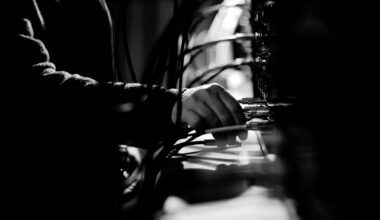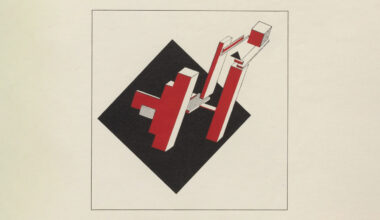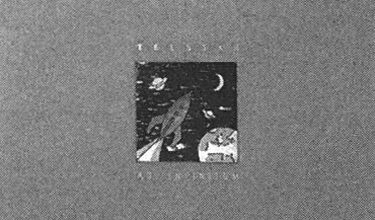American composer and sound artist Tristan Perich tells us about using 1-bit electronics, working with organ virtuoso James McVinnie, and the importance of patterns in making music
Sometimes, all it takes is a quick email to get things moving. A case in point is the collaboration between New Yorker Tristan Perich, a contemporary-classical composer drawn to the possibilities of the most basic electronic sounds, and British organist James McVinnie, who’s currently a resident artist at London’s Southbank Centre. The partnership began when McVinnie saw Canadian pianist Vicky Chow perform ‘Surface Image’ – a piece for solo piano and 40-channel 1-bit electronics, composed with Perich – in Latvia in 2016.
“James wrote to me to see if he could play it sometime,” says Perich down the line from New York. “And then two hours later, he sent a follow-up email. He’s like, ‘By the way, how do you feel about the organ?’, so I just immediately wrote back, ‘I’ve wanted to do a big project for organ for a really long time’.”
“The music hit me straight between the eyes,” adds McVinnie. “And I knew immediately that a work for organ and speakers constructed on similar lines would prove to be an incredible addition to the repertoire.”
So ‘Infinity Gradient’ was born. Scored for solo organ and 100 speakers in 1-bit audio, and comprising eight continuous movements, it’s set to be performed at the Royal Festival Hall in March. The work premiered at Musica Festival, Strasbourg in 2021, but London may offer a definitive take because there are plans to record ‘Infinity Gradient’, creating – in Perich’s own words – an “official document”.
But of what? On one level, Perich’s work couldn’t be simpler. For example, a fire alarm is 1-bit audio, generated by a switching current. The sound is binary, limited, lo-fi. In Perich’s music, though, complexity arises from the weaving together of these basic electronic sounds with, in the case of ‘Infinity Gradient’, McVinnie’s keyboard part. What’s certainly not straightforward is balancing and setting up the 100 speakers.
“I’m going to bring the speakers over to the UK,” says Perich. “They all plug into some circuit boards that I’ve built.”
He adds that, conceptually, you can see these speakers as playing a “digital score”. Most importantly, Perich is doing all this as part of a live process so that even though the audience is listening in part to pre-programmed sounds, everything is happening in the moment.
These moments should be particularly grand at the Royal Festival Hall, not least because the performance of ‘Infinity Gradient’ is part of a season celebrating the 70th anniversary of the venue’s 7,866-pipe organ. If Perich’s self-built circuit board/speaker combinations represent the simplest of instruments, the organ – which McVinnie describes as being of seminal importance in 20th century British organ design and “an ideal instrument for the exploration of contemporary repertoire” – is at the other end of the spectrum. Difficult to maintain, it became unusable by 2000, and needed to be extensively renovated.
Perich is fascinated by the organ more generally because of the connections he sees between 1-bit electronics and the keyboard, and the way he approaches composition.
“I think about music primarily as a pianist in terms of the shapes of different chords,” he explains. “Within that, patterns that are possible with the fingering or the hands or shifting chords. I see all that as just different hierarchies of patterns.
“With a piano, there is one-to-one mapping between your finger, the mechanism and the sound, and each key is a different pitch. All this stuff is laid out in very direct physical terms, and that ties into the way I approach the electronic sound. There’s this kind of grid of pitches, this grid time, these events – a note turns on, and turns off.”
For Perich, the organ further embodies this “very basic” approach to music.
“You can press the key down and it’ll sustain forever as long as the mechanism is going,” he says.
Both he and McVinnie are also fascinated by the idea that an organ fills a specific space, and that “the instrument is the space”. Plus, it’s enjoyable to play. As a kid attending boarding school, Perich had access to a chapel organ after hours.
“It was a really fantastic experience to turn off all the lights – so it was literally black – and play. You really kind of lived in that sound and it was fun because I got to experiment. You’d tape some keys down and just play a drone for a long time, then move through the space and hear it.”
Perich’s childhood might be described as bohemian. His mother ran a gallery. His father, Anton, is a Croatian-American artist who was friends with Andy Warhol. Prefiguring his son’s fascination with creating instruments, Anton Perich designed and built an electric painting machine in the 1970s. Both of Perich’s parents loved the music of Philip Glass, so he grew with the idea that “music can be fully about patterns”.
As a youngster, Perich says he enjoyed “writing software, having fun, starting little website projects”. At this point, his interest in computing didn’t intersect with his love of music.
“They were parallel paths,” he recalls. “Then in my last year of college, I started learning how to programme circuits and build microchips. A couple of months went by and everything kind of imploded at once. I’ve been on that trajectory ever since.”
Programming code on chips, Perich adds, forces him to think about the structure of his pieces.
“How does the synthesis software work? How am I making my tones? And then how am I arranging that in time? Is this a melodic sequence? Is this generative music? Is it open-ended? Is there randomness? All these questions go into the software because you’re designing an instrument at that point.”
And if Perich wants to write different music, he simply “changes the code”.
We’re back to the link between composition and musical instruments as physical objects – a recurring theme over two conversations – and also the Philip Glass influence, about the way patterns can create meaning. But what about the results? What constitutes success? It’s revealing that Perich namechecks Japanese visual/sound artist Ryoji Ikeda, famed for using very high tones and for creating works that make listeners ask the age-old question of whether a piece can really be described as music.
“I always feel as though I’ve really nailed it when the music sounds like you’re listening to something and then a truck starts backing up outside,” he says. “But then you get a few layers of that beeping and you’re like, ‘Oh, there’s music there’.”
Tristan Perich has recently signed to Erased Tapes, with the first recording project scheduled for release in summer 2024






